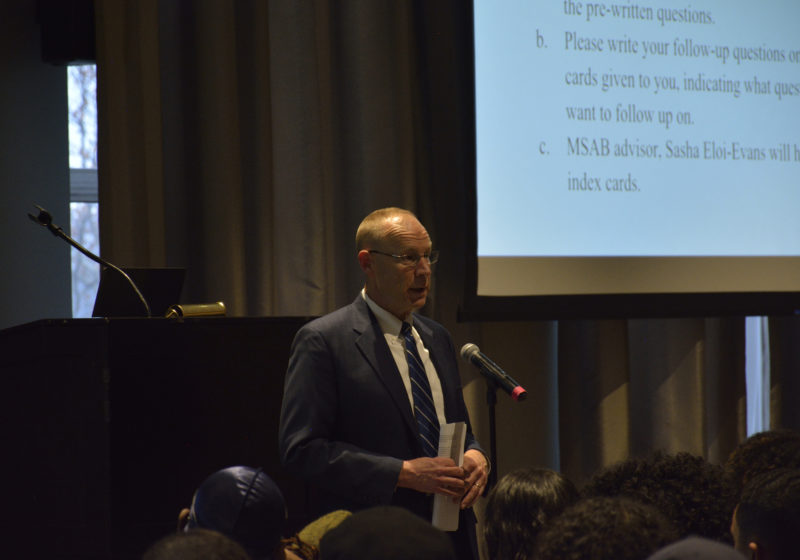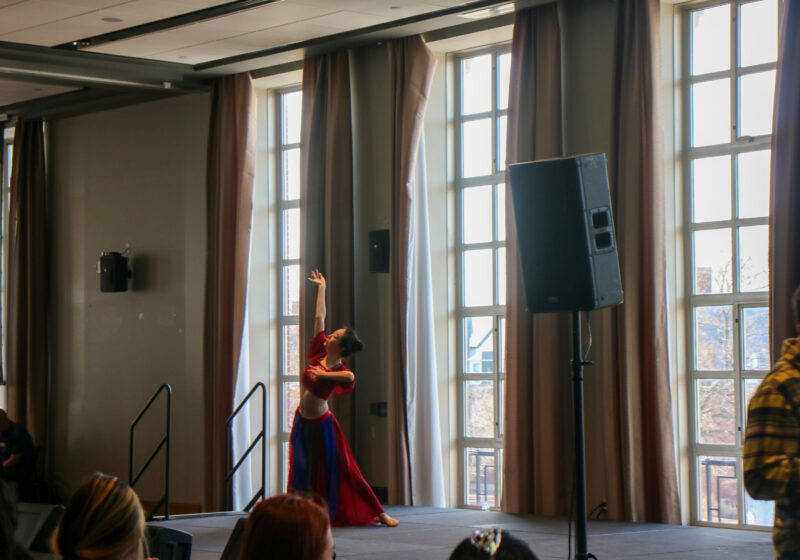The jury is still out on the overall effectiveness of MSAB’s public forum last week regarding the October proposal to arm Public Safety.
What is not up for dispute however, is what actually happened at the event.
Director of Public Safety Mark Fischer, in presenting and answering questions, clarified much about the proposal and Public Safety itself.
In case you missed it, and have not yet found two hours to go through the CT Facebook Live recording, here are our bitesize highlights.
The proposal aims to improve response time to incidents involving a weapon.
Early on, Fischer was asked what had changed since the 2016 Security Commission Report, which made recommendations to continue staffing the River Campus with unarmed officers. Noting the lack of increase in crime, he spoke about his aim to avoid the delayed response time of Rochester Police Department (RPD) officers getting to campus.
“If you’re in a situation that involves a weapon and you have to wait [five, six] minutes for someone to get there, that’s a very long time to wait for an officer,” Fischer said. He compared this to the two minute average response time of DPS officers.
Unarmed officers cannot proceed into an incident involving a weapon, even if they are there first.
Armed officers are the only ones able to respond to a situation where there is a potential or confirmed threat of a weapon.
For the River and Eastman campuses, this means the swiftness of resolving a situation depends on the travel time of the responding RPD or URMC officer.
“I don’t see an alternative to sending an armed officer to those kinds of situations,” Fischer said. “I’m not aware of anyone who [does]. What I’m saying is I think [those officers] should be my officers because they’re the best trained[.]”
Compared to RPD, DPS has additional restrictions on when to use a firearm.
Fischer said that RPD and DPS receive the same training with firearms. Armed DPS officers, however, can only fire a gun when they are “facing the imminent use of deadly physical force” against themselves or another person. Fischer said that RPD deems some other circumstances acceptable for firing a gun, and that DPS officers are comparatively limited.
Since URMC officers were armed in 2016, their weapons have been drawn five times.
Fischer gave no indication that these weapons were fired in any of these instances.
Active shooter drills are done when school is not in session.
When asked about the potential active shooter training for students and faculty, Fischer said that he did not believe an on-campus drill when class is in session is plausible and safe. He did direct students to a free online precautionary course, “Security Active Shooter Awareness,” on MyPath.
When the proposal asked to arm three officers, it meant per shift.
As the forum wound down, an audience member asked a clarifying question:
“People keep saying there will be three new armed officers — is that per shift?”
President Feldman clarified that the proposal was asking for three armed officers on every shift, which would be 15 new armed officers in total.
Feldman did not guarantee that the ad hoc committee would comprise of 50 percent people of color.
“[B]ut I will promise that it will be significantly people of color,” Feldman said in his answer.
He elaborated that in making the committee as representative as possible, he would be selecting members who represent various sectors of the community, such as international and graduate students, faculty, and staff.
Ultimately, the decision lies with Feldman.
Nearing the end of the forum, President Feldman was asked if he would forfeit his power to make the final decision to the ad hoc committee. He clarified the impossibility of this given the University’s constitution.
“I will ask [the ad hoc committee] to think through the answers to the [questions] that came up here today and other questions that arise,” he said.
The recommendations of the ad hoc committee and Public Safety Review Board to President Feldman are expected to be complete by the Spring of 2019.





